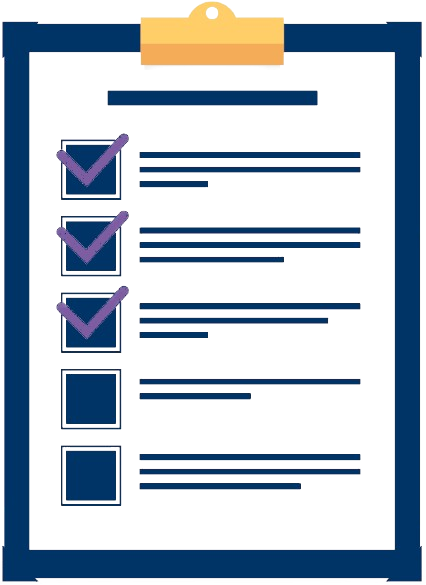Suggestions based on the Question and Answer that you are currently viewing
Solve Problem 24.17 except that in part (a), determine cutting speed for minimum cost.
If a rise in aggregate demand were to encourage firms to invest more, how would this influence the size of the rise in real GDP?
Identify some of the important factors that should enter into the make or buy decision.
Go through each of the determinants of consumption that were listed in the previous section and consider how they will affect saving. Are there any determinants of consumption in that list which will not cause savings to rise if consumption is caused to fall?
If fringe benefits (such as long holidays, company cars, free clothing/uniforms, travel allowances and health insurance) were included, do you think the level of inequality would increase or decrease? Explain why.
If the Bank of England issues £1 million of extra bonds and buys back £1 million of Treasury bills, will there automatically be a reduction in credit by a set multiple of £1 million?
Explain why the stock price of a firm may rise when the firm announces that it is repurchasing its shares. (LO4)
Describe four personal decision styles used by managers.
In June 2014, the board of directors for McElroy Enterprises Inc. authorized the sale of $10,000,000 of corporate bonds. Jennifer Grayson, treasurer for McElroy Enterprises Inc., is concerned about the date when the bonds are issued. The company really needs the cash, but she is worried that if the bonds are issued before the company’s year-end (December 31, 2014) the additional liability will have an adverse effect on a number of important ratios. In July, she explains to company president William McElroy that if they delay issuing the bonds until after December 31 the bonds will not affect the ratios until December 31, 2015. They will have to report the issuance as a subsequent event which requires only footnote disclosure. Grayson expects that with expected improved financial performance in 2015, ratios should be better. Instructions (a) What are the ethical issues involved? (b) Should McElroy agree to the delay?
What are the three types of starting materials in rapid prototyping?
For each of the following independent situations, indicate the amount the taxpayer must include in gross income and explain your answer:
Given a large volume of metallic powders, all of which are perfectly spherical and having the same exact diameter, what is the maximum possible packing factor that the powders can take?
What are the risks of investing in stocks in emerging markets? (LO7)
List the primary methods of fiber reinforced thermoset polymer composite production according to the composite video.
The pretax financial income (or loss) figures for Jenny Spangler Company are as follows. 2009 $160,000 2010 250,000 2011 80,000 2012 (160,000) 2013 (380,000) 2014 120,000 2015 100,000 Pretax financial income (or loss) and taxable income (loss) were the same for all years involved. Assume a 45% tax rate for 2009 and 2010 and a 40% tax rate for the remaining years. Instructions Prepare the journal entries for the years 2011 to 2015 to record income tax expense and the effects of the net operating loss carrybacks and carryforwards assuming Jenny Spangler Company uses the carryback provision. All income and losses relate to normal operations. (In recording the benefits of a loss carryforward, assume that no valuation account is deemed necessary.)
How will the composition of aggregate demand at point c\" and a\" in Figure 21.12(c) differ?
Hannah Tywin owns 100 shares of MM Inc. stock. She sells the stock on December 11 for $25 per share. She received the stock as a gift from her Aunt Pam on March 20 of this year when the fair market value of the stock was $18 per share. Aunt Pam originally purchased the stock seven years ago at a price of $12 per share. What are the amount and character of Hannah’s recognized gain or loss on the stock?
In the absence of restrictive provisions, what are the basic rights of stockholders of a corporation?
Which is easier – for managers to make decisions that maximise profits or for consumers to make decisions that maximise their utility? Discuss some of the arguments in favour of each case
Meyer reported the following pretax financial income (loss) for the years 2012–2016. 2012 $240,000 2013 350,000 2014 120,000 2015 (570,000) 2016 180,000 Pretax financial income (loss) and taxable income (loss) were the same for all years involved. The enacted tax rate was 34% for 2012 and 2013, and 40% for 2014–2016. Assume the carryback provision is used first for net operating losses. Instructions (a) Prepare the journal entries for the years 2014–2016 to record income tax expense, income taxes payable (refundable), and the tax effects of the loss carryback and loss carryforward, assuming that based on the weight of available evidence, it is more likely than not that one-fifth of the benefits of the loss carryforward will not be realized. (b) Prepare the income tax section of the 2015 income statement beginning with the line “Income (loss) before income taxes.”
Assume that fracking becomes common across the UK. The result is that supplies of shale gas and oil increase sharply. Trace through the effects of this on the market for oil, gas and the market for other fuels.
What can a mill-turn center do that a conventional turning center cannot do?
Why might it be better to ban certain activities that cause environmental damage rather than to tax them?
Sasha owes additional tax imposed in a recent audit. In addition to the tax, will they be assessed other amounts? If so, how will these amounts be determined?
Neither depreciation on replacement cost nor depreciation adjusted for changes in the purchasing power of the dollar has been recognized as generally accepted accounting principles for inclusion in the primary financial statements. Briefly present the accounting treatment that might be used to assist in the maintenance of the ability of a company to replace its productive capacity.
The benefits of buying with AnswerDone:

Access to High-Quality Documents
Our platform features a wide range of meticulously curated documents, from solved assignments and research papers to detailed study guides. Each document is reviewed to ensure it meets our high standards, giving you access to reliable and high-quality resources.

Easy and Secure Transactions
We prioritize your security. Our platform uses advanced encryption technology to protect your personal and financial information. Buying with AnswerDone means you can make transactions with confidence, knowing that your data is secure

Instant Access
Once you make a purchase, you’ll have immediate access to your documents. No waiting periods or delays—just instant delivery of the resources you need to succeed.
